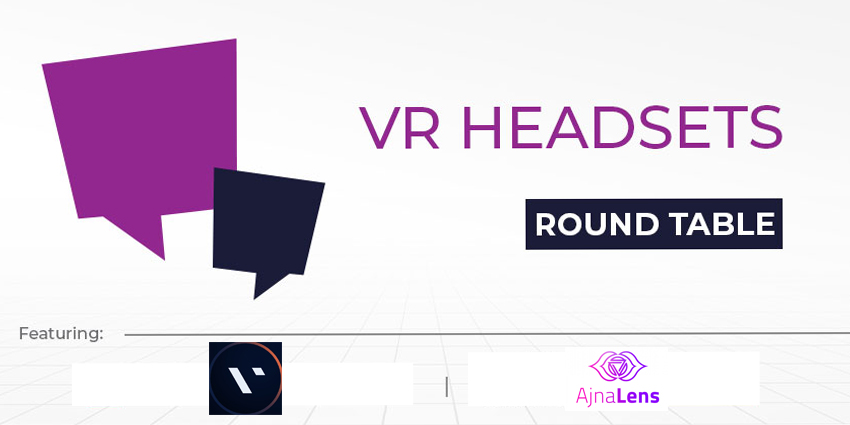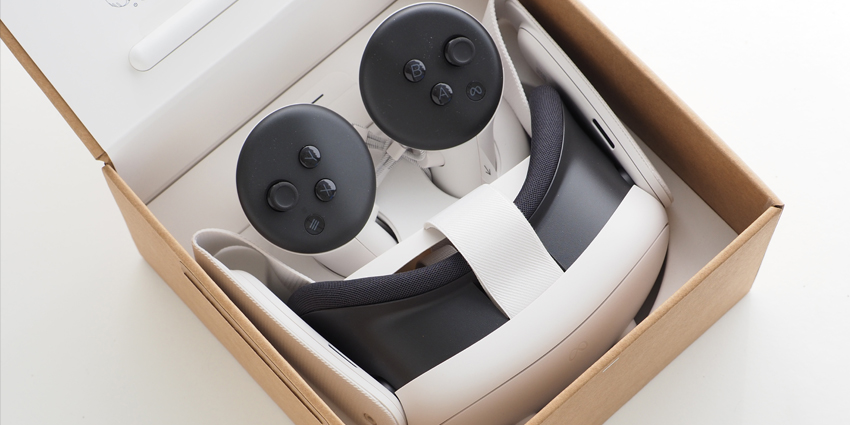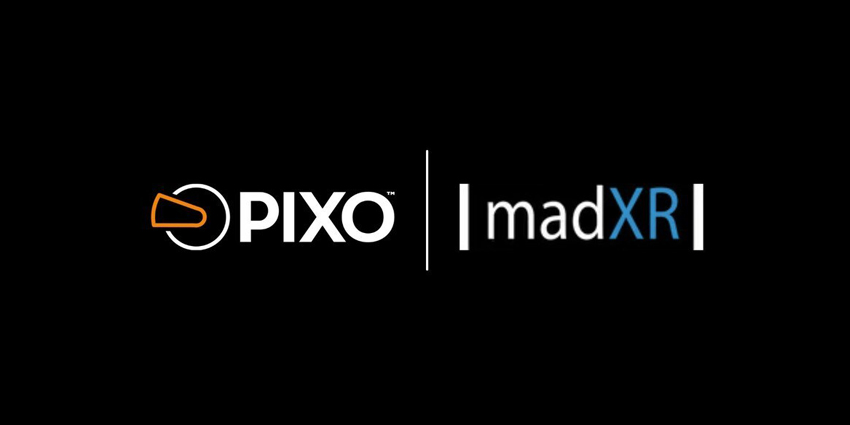Virtual reality (VR) headsets are on a constant uphill trajectory which sees the hardware’s landscape evolve rapidly with new components, integrated software, and use cases.
Over the last year, VR headsets are gaining reaction thanks to many technological innovations, such as hand-tracking, eye-tracking, and wireless streaming, which benefit business and consumer end-users.
Another significant extended reality (XR) technology innovation is the introduction of mixed reality (MR) and full-colour passthrough technologies. MR-integrated immersive wearables allow a user to combine their surrounding real and virtual worlds. MR passthrough enables users to display augmented visuals in real-world locations or introduce real-world items, such as a keyboard, into a workplace VR environment.
MR/VR headsets are evolving as events like CES 2023 allow XR vendors to showcase some of the latest insights and innovations leading the industry.
Introducing the Panelists, AjnaLens, VITURE
For our XR Today round table, we welcome the following:
AjnaLens is an Indian provider of XR equipment. The firm recently drew eyes following its CES 2023 showcase of AjnaXR and AjnaVidya. AjnaXR is an upcoming enterprise-grade MR headset, and AjnaVidya is an accompanying “all-inclusive XR ecosystem” to nurture application and talent pool growth on the AjnaXR device.
AjnaLens appears to be on a mission to develop and support and develop the region’s XR marketplace with its product portfolio and hiring campaigns.
VITURE also debuted a new device at CES 2022. The San Francisco, California-based firm demoed its Mobile Dock solution at the event; the immersive wearable allows users to stream media and gaming content to their device on a 120-inch virtual screen.
VITURE is currently taking preorders for its device. According to its product roadmap, the firm expects to ship its device in March or April, following a high volume of backers and pre-orders.
Can you tell us about your latest VR/MR offering? What can it achieve, and who is its target audience?
David Jiang:
Our first product will be the VITURE One XR Glasses. This is an XR product that displays a 120″ screen with endless entertainment options in front of a consumer with a pair of stylish and lightweight glasses.
Our glasses are designed to transform the way we interact with content. The glasses can connect to USB-C devices like Steam Deck for incredible mobile gaming experiences but it can also be paired with VITURE’s neckband accessory to access a huge library of popular entertainment apps like Netflix, YouTube as well as cloud gaming applications to play AAA games wherever, whenever.
The team will also be releasing a mobile dock that allows users to connect to phones, Nintendo Switch and more for multiplayer gaming and streaming.
VITURE One XR Glasses combine advanced cloud computing and human-computer interaction to allow consumers to take full control of their entertainment experience on the go.
The glasses are already shipping to backers from the Kickstarter campaign and will be available for purchase in the spring of 2023.
Pankaj Raut:
AjnaVidya is an immersive learning platform designed to facilitate easy access to immersive learning content for enterprises and professionals.
Connecting the creators with the end consumers, AjnaVidya enables developers to create high-fidelity XR content while empowering customers with the flexibility to discover a variety of training experiences to meet their needs.

Through AjnaVidya, we intend to transform the way humans learn, making it intuitive, engaging, and quantifiable.
Over the years, VR/MR has been used for multiple purposes, including gaming and entertainment. We saw an opportunity to leverage XR for upskilling youth globally and making them industry-ready
What are the most critical factors when developing an enterprise VR headset? How do they differ from consumer-facing ones?
Pankaj Raut:
When developing headsets for the enterprise, it is essential to keep in mind the need for devices that are both feature-rich and helpful in cutting down the cost for the company.
Enterprises headsets are intended to optimize their training solutions, upgrading the methods while reducing the cost of procuring headsets and decreasing the time and resources spent on training their employees.
David Jiang:
While I don’t have experience developing VR headsets themselves, I have worked on several AR products for both enterprises and consumers. In my experience, enterprises are looking for functionality and productivity, while consumers are more attracted to a ‘wow’ factor in the specs and features.
When developing for enterprise versus consumer, there are major differences. For enterprises, VR is typically developed as an educational or training tool. Doctors have used VR to practice surgical techniques, and pilots have utilized VR to develop flying skills and experience unique scenarios.
The most important thing for developing an enterprise product is meeting the needs of the business or organization that will be using it as a training tool. Developers focus on efficiency, software compatibility, and anything that can help push the business forward.
Consumer-facing products are much more mature than the enterprise category, thanks to popular headset providers such as Oculus [Meta]. Developers already have knowledge of the general consumer’s wants and needs in a VR product and focus on improving specs, design, features or anything to distinguish themselves from the competition.
How does full-colour passthrough technology remove obstacles for mixed reality experiences for users and developers?
David Jiang:
Full-color passthrough technology has been a breakthrough technology that is very useful in the XR industry. No one has successfully perfected it yet, the only headset that claims full color passthrough is Quest Pro, and while it is a revolutionary technology, there are still improvements that can be made.
Full-color passthrough has helped to mix the real world and virtual reality for a smooth mixed reality product. It allows users to see through the visuals in an XR product and see objects that exist in the real world. This has a lot of safety and convenience benefits.
It also allows developers to design innovative programs based on real-world environments. Certain games that utilize this technology well can have characters and game storylines interact with objects in the player’s real environment. Developers can work on unique applications to take advantage of this to improve user experience in the future.
Eventually, the majority of AR and VR devices will likely feature some level of MR to allow users to be grounded in the real world.
Pankaj Raut:
With the industry shifting to XR for learning and development, it is imperative that the headsets they wear facilitate full-colour passthrough technology.
This is because they learn to perform a job or a skill in the virtual environment while practising the learnings and interacting with objects in the real world. Meaning that the users can be in the virtual environment while viewing the world the way it is.
For developers, full-colour passthrough means blending the real and virtual worlds. This empowers them to create diverse XR applications that leverage the notion of staying in the virtual world while being connected to the actual environment.
Which trends have you noted for 2023, and what should the XR market expect?
Pankaj Raut:
The XR industry has been growing since its inception. That being said, 2023 has transformed how we perceive and integrate XR across industries. The reduced form factor will now make it easier for users to wear and use the headset for prolonged hours.
Besides, industry leaders focus more on user experience, making the headset thin, light and comfortable.
Also, cloud computing has become an integral part of streaming XR content. This is to eliminate hardware limitations, rendering high-fidelity XR content and empowering the users with photorealistic experiences without any hassle.
Furthermore, XR as a technology is readily being used to create an impact in society. Applications such as XR for immersive learning, virtual care, remote assistance, etc., are making jobs easier and better.
David Jiang:
This is a huge year for the XR industry; it looks like Apple will be launching its very first VR headset, which will make some waves and jumpstart the entire ecosystem.
With popular tech giants entering the industry as competitors, you can expect technology to develop quickly as they battle for the best products on the market.
The XR glasses market will explode this year. VITURE and a few competitors are launching XR glasses in 2023, and early-adopting developers will notice the popularity and potential of these products when executed properly and begin to work on applications specifically designed for XR glasses.
I think that the possibilities are endless, but developers will likely prioritize utility apps like weather, communication, and news – as well as gaming programs that can take advantage of the XR capabilities.
I also predict that by the end of the year, most people will either know someone personally or encounter someone using XR glasses in public as it takes off and becomes a useful mobile product and a great option for entertainment on the go.
XR glasses will allow users to enjoy gaming, shows, streams, and more in the cafe, on their train commute or even on an airplane.
Have you got anything else you would like to add?
David Jiang:
Fundamentally these XR products are simply revolutionizing the way humans will communicate with digital content. This will take some time for humans to adapt as it did with Radio, TV, and other major technological advancements.
But the days of experiencing all content from a rectangular screen will transition to people interacting with digital content on the go using innovative products like XR glasses. This trend won’t happen overnight, but I believe it will gain popularity each year and become commonplace before we know it.
In the early 1980s, Steve Jobs and the Apple team were working on a design for a pocket computer, which is essentially the smartphone now. It took 25 years for the technology to catch up, and the iPhone was born.
I view XR the same way, people have been yearning for effective XR products for a while, and the technology is finally at a place to deliver strong hardware that offers great XR experiences.
The technology will continue to rapidly develop in the next 5-10 years to truly elevate the XR experience, and it will be the ideal way to experience entertainment before we know it.
Pankaj Raut:
Most of us consider the adoption of AR/VR as the end goal.
We must understand that technologies are only a means or tool to achieve something more significant. They serve as the medium to build solutions that can transform society, impacting the lives of everyone around us.
We must see through the potential and be able to implement them in the best way.







